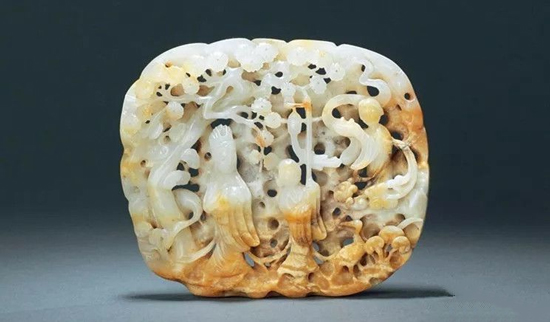The shape and characteristics of the jade carving figures of the past
Chinese jade culture has a long history, but jade portraits are very rare. These jade portraits are made by plane engraving techniques, most of which are human heads, which express their outlines in an openwork technique and express their details in an intaglio technique. The jade carving portrait is a portrayal of primitive life, and it is also a reflection of social ideology and customs in the art field. It also reflects the strong religious consciousness of prehistoric people. Several human body jade statues in prehistoric times in China were discovered in the original cultural cemetery of Lingjiatan, Hanshan County, Anhui Province. These jade people have a well-proportioned proportion and beautiful shape, showing the appearance and style of the original ancestors in the Jianghuai area, and have a high appreciation value. Jade carving figures from different periods During the Shang and Zhou Dynasties, the types and shapes of human jade carvings in this period were much richer than those of the original era. Except for a few flat sideways figures, the rest were round heads and round sculptures. The basic shapes were also cylindrical. There are round and embossed points on the craft. It was first seen in the Neolithic Age, and it was also popular during the Shang Dynasty. In the spring and autumn decoration, on the basis of the mutual connection in the late Western Zhou Dynasty, there are curls and connected patterns, and the layout is full and dense, leaving no blanks. Warrior jade, fine knife, sharp vertical sharp edges, fine grinding, surface of the object, especially in the Yin-line groove, the inner wall of the hole is even and smooth. During the Spring and Autumn Period and the Warring States Period, the jade faces are close to the Western Zhou style, but the hairstyles are completely different. The tattoos on the body are exquisite and meticulous, like the snakes are coiled together, and they all have an "S" shape. The jade articles of the Han Dynasty, the characteristics of the workmanship of the objects are good at using the Yin line, the lines are bold, but there is no fine workmanship in the Warring States period. The edges and corners of the objects are rounded, and the inner walls of the perforated objects are often not smooth enough, often with traces of wire saw cutting. There are two types of characters in this period: jade dancers and jade Wengzhong. The jade articles of the Tang Dynasty are represented by flying clouds. There are clouds in the sky, the body is curved, the chest is high, the shoulders are covered with ribbons, the long skirts are held, the hands are holding the fresh fruits, and the hands are forward. Tang Feitian Yu people were mostly in the early stage, and later appeared in the back. Yu Feitian is a kind of ornament that was first created and prevailed in the Tang Dynasty. In the Song Dynasty jade carving, there was a tendency of secularization. The most typical one was the jade carving boy, which was extremely large in the handed down products. The shape is as large as the Chinese clothes, the vests and fat pants, and the lotus flower. This is the most popular theme in the Song Dynasty. The main feature of the Yu people in the Yuan Dynasty is to open the face like a monkey face. It uses a wide, intaglio line to outline the eyebrows, eyes, mouth and nose, and the lines are connected. In particular, it is pointed out that the Yuan Dynasty has an eyeball when it is scratching the eye (using a short Yinxian line in the arc-shaped eye), which is a rare feature in other eras. In addition, the apex of the eye is round, while the eye of the Song Dynasty is pointed. In the Ming Dynasty, auspicious composition was prevalent, such as Qilin to send children, baby plays, etc., there are pictures that are intentional, intentional, and people-oriented, multi-drama, story characters and paintings by celebrities, and writing celebrity verses and Fu, Shou and other words. In the Ming Dynasty, the jade cutters were thick and strong, and they were embossed and hollowed out, and there were double or even three layers of enamel carvings. There are many kinds of characters in the Qing Dynasty. The characters include old men, boys, ladies, etc. The contents are too drunk, boys, cats, boys, horses, drums and cloth monks. Their characters are vertical, squat and sitting. The image is vivid and the look is realistic, which is beyond the reach of the past. Mens Outside Shirts,100% Cotton Outside Wear Shirts,Mens Outside Long Sleeve T-Shirt,Outside Sweat Proof T-Shirt Shaoxing Moonten Trade Co., Ltd , https://www.moontenclothing.com